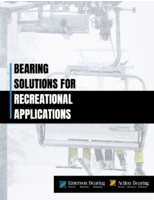ASTM Committee to develop standards for driverless AGVs.
Press Release Summary:
Technical committee F45 on Driverless Automatic Guided Industrial Vehicles will develop standardized nomenclature and definitions of terms, recommended practices, guides, test methods, specifications, and performance standards for AGVs. In addition, F45 will encourage research by sponsoring symposia, workshops, and publications related to AGVs. Some topics for potential standards development include terminology; specifications for navigation technologies; and test methods for battery life.
Original Press Release:
New ASTM Committee to Develop Standards for Driverless Automatic Guided Industrial Vehicles
ASTM International has launched a new technical committee, F45 on Driverless Automatic Guided Industrial Vehicles. After organizational meetings in October 2013 and January 2014, F45 was approved at the board of director’s recent spring meeting.
In use since 1953, automated guided vehicles (AGVs) are defined by the Material Handling Institute (MHI) as “computer-controlled wheel-based load carriers (normally battery powered) that run on the plant floor (or if outdoors, on a paved area) without the need for an onboard operator or driver.” The widespread use of AGVs throughout industries as varied as healthcare, food/beverage and warehouse distribution led to a call for standardization of AGV capabilities and performance.
“AGVs have a long, useful history and they are becoming faster, smarter and more capable to tackle even more applications in distribution, manufacturing and other industries,” says ASTM member Roger Bostelman, senior engineer, mobile robots for smart manufacturing, National Institute of Standards and Technology. “It is therefore critical to develop and implement F45 standards so that manufacturers, users and potential users can fully understand their AGV’s performance and adaptability to new, perhaps ever changing tasks.”
AGVs, which can vary widely in design, provide many benefits to a workplace, according to case studies compiled by the MHI. These include improved process flow, reduced material damage from mishandling, seamless interface between inventory management software and the vehicle’s onboard system and the flexibility to modify vehicle movements as production requirements evolve.
While AGVs have evolved into complex material handling transport vehicles, there are currently no standards to allow direct comparisons of their intelligent performance. The lack of standards has prevented users from making full use of AGVs unless users conduct tests at their own expense.
According to its scope, F45 will develop standardized nomenclature and definitions of terms, recommended practices, guides, test methods, specifications and performance standards for AGVs. In addition, F45 will encourage research by sponsoring symposia, workshops and publications related to AGVs. The following subcommittee structure will exist for F45:
• F45.01 Environmental Effects;
• F45.02 Docking and Navigation;
• F45.03 Object Detection and Protection;
• F45.04 Communication and Integration;
• F45.90 Executive; and
• F45.91 Terminology.
Committee F45 has identified the following topics for potential standards development:
• Terminology;
• Specifications for different navigation technologies;
• A practice for determining maintenance costs, minimum quality levels, obstacle detection and avoidance, and distinctions between interactive AGVs and standalone machines; and
• Test methods for battery life and vibration analysis and speed control.
All interested parties are invited to join in the development of F45 standards. The committee is particularly interested in representation from:
• The AGV subcommittee within MHI;
• The Association for Unmanned Vehicle Systems International;
• ANSI Committee B56;
• Society of Automotive Engineers;
• Robotic Industry Association;
• Institute of Electrical and Electronics Engineers; and
• Semiconductor Equipment and Materials International.
ASTM International welcomes participation in the development of its standards. For more information on becoming an ASTM member, visit www.astm.org/JOIN. For more news in this sector, visit www.astm.org/sn-transportation or follow us on Twitter @ASTMTransport.
Technical Contact: Roger Bostelman, National Institute of Standards and Technology, Gaithersburg, Md., roger.bostelman@nist.gov
ASTM Staff Contact: Pat Picariello, Phone: 610-832-9720; ppicariello@astm.org
ASTM PR Contact: Barbara Schindler, Phone: 610-832-9603; bschindl@astm.org




